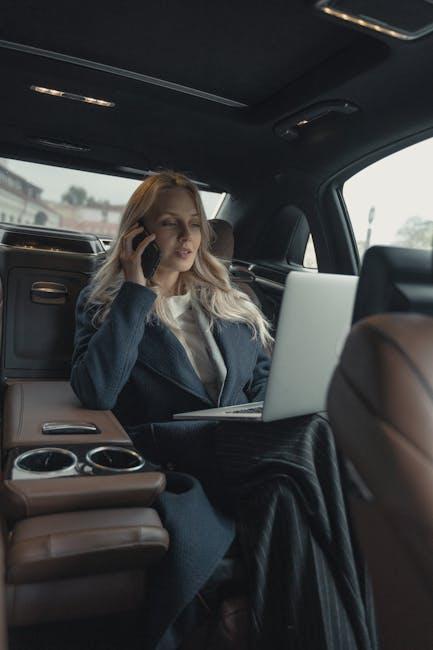In today’s fast-paced world, managing family debt has become an increasingly critical skill for households striving to achieve financial stability. As families navigate the complexities of mortgages, student loans, credit card balances, and unexpected expenses, the importance of adopting a strategic approach to debt management cannot be overstated. This article delves into the smart ways to manage family debt, offering a comprehensive analysis of effective strategies that empower families to regain control over their finances. By understanding the nuances of debt dynamics and implementing tailored solutions, families can not only alleviate financial stress but also pave the way toward a secure and prosperous future. Through a confident examination of budgeting techniques, debt consolidation options, and long-term planning, we aim to equip readers with the tools necessary to transform financial challenges into opportunities for growth and stability.
Understanding the Root Causes of Family Debt
One of the pivotal steps in managing family debt is gaining a clear understanding of its underlying causes. These can often be traced back to a few fundamental factors. Overspending, fueled by a consumer-driven society, can quickly spiral into debt as families strive to maintain a lifestyle beyond their means. Additionally, unexpected emergencies, such as medical expenses or urgent home repairs, can lead to significant financial strain if there is no emergency fund in place.
- Income Instability: Irregular or insufficient income can make it difficult to meet monthly obligations.
- High-Interest Debt: Accumulating credit card debt with high-interest rates can exacerbate financial burdens.
- Lack of Financial Literacy: Without proper financial education, families may struggle to budget effectively or make informed financial decisions.
Addressing these root causes requires a strategic approach, focusing on creating a realistic budget, building a savings buffer, and improving financial knowledge. By tackling these elements, families can pave the way toward financial stability and a more secure future.

Strategies for Creating a Sustainable Budget
Crafting a sustainable budget is pivotal for effective debt management within a family. Start by identifying all income sources and listing them comprehensively. This will provide a clear view of the available financial resources. Next, categorize your expenses into essential and non-essential. Essentials often include housing, utilities, groceries, and healthcare, while non-essentials might cover dining out, entertainment, and subscriptions. By differentiating these, you can prioritize spending and identify areas where cutbacks are feasible.
Adopt the habit of setting realistic financial goals that align with your family’s lifestyle and debt repayment plan. This could involve reducing discretionary spending or increasing savings by a certain percentage each month. Regularly review your budget to ensure it remains aligned with any changes in income or expenses. Utilize budgeting tools or apps that can assist in tracking expenditures and provide insights into spending patterns. By maintaining this disciplined approach, you can effectively manage family debt while ensuring long-term financial stability.

Effective Communication Techniques for Financial Harmony
Achieving financial harmony in a family setting requires open, clear, and empathetic communication. It’s essential to engage in discussions that prioritize understanding and mutual goals. Begin by establishing a regular family financial meeting to ensure everyone is on the same page. These meetings should be a safe space for discussing financial priorities and concerns, fostering a sense of shared responsibility. Active listening is key—ensure each family member feels heard and respected. Encourage questions and provide clear, jargon-free explanations of financial concepts to build confidence and clarity among all members.
- Set clear objectives: Outline short-term and long-term financial goals together.
- Foster transparency: Share information about debts, expenses, and savings openly.
- Encourage participation: Involve all family members in decision-making processes.
- Address conflicts promptly: Resolve misunderstandings with calm, constructive dialogue.
By employing these techniques, families can navigate the complexities of debt management with greater ease and confidence, transforming potential stressors into opportunities for growth and unity.

Leveraging Financial Tools to Reduce Debt Burden
In the quest to manage family debt effectively, harnessing the power of financial tools can be a game-changer. These resources are designed to provide clarity and control, making it easier to navigate the complexities of financial obligations. Budgeting apps and expense trackers are essential tools that help families keep a close eye on their spending habits, ensuring that every dollar is accounted for. By setting realistic financial goals and tracking progress, families can make informed decisions that align with their debt reduction plans.
Moreover, debt consolidation services and financial calculators can simplify the repayment process. Consolidation services combine multiple debts into a single payment, often at a lower interest rate, which can reduce the overall financial burden. Meanwhile, financial calculators allow families to project their debt payoff timelines and adjust their strategies accordingly. Utilizing these tools not only enhances financial literacy but also instills a sense of confidence and empowerment, enabling families to tackle their debt head-on. Consider incorporating:
- Automated savings plans to build an emergency fund
- Credit monitoring services to maintain healthy credit scores
- Online financial courses to boost financial acumen



